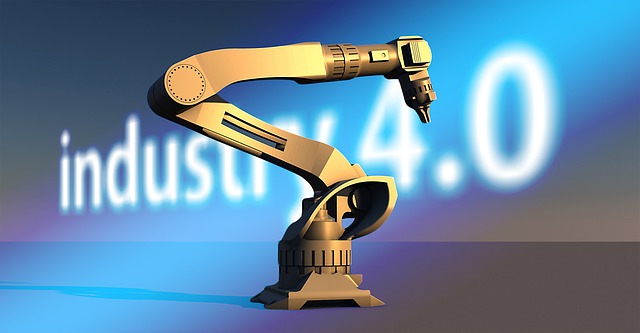
The demand for industrial robots has increased in recent years. Many industries such as automobile, computer, or consumer electronics invest in this technology, hoping to benefit from new metal employees.
The reason for this wide acceptance and application is not far-fetched. Robots come with superior functional flexibility and abilities compared to standard manufacturing machines. They are flexible and can perform various functions through different types of motions that have been programmed into them. Robotics utilization in the manufacturing process makes it easy for the company to respond rapidly to market alterations and meet their customer’s needs.
There are many benefits of utilizing industrial robots but the most obvious are an improved quality and efficiency. Industrial robot reduces production inconsistency; minimizes the use of raw materials and the overall cost of production. Some industrial robots interact closely with human staff and perform a broad range of tasks. Such technology is called collaborative robots or cobots. Robots may transport loads from place to place, OR relieve human workers from risky or repetitive tasks such as welding or cutting.
One of the factors that affect the performance of a robot and safety grade in the workplace is dynamic stability. This is especially crucial if the robots are designed for carrying large consignments, or for performing high-speed operations. It equally affects robots that come with larger manipulator and higher coverage areas. Dynamic stability as other KPI’s of a manipulator depend on it’s structural units – robotic joints.
The integrated design of these robotic joints makes them highly versatile. It also boosts the capacity and flexibility of the robots which makes the machines easy to assemble.
General Structure
Joints
A standard industrial robotic manipulator consists as a rule of 7 joints. The function of joints and gripper on the top of the last one is to move and position machine parts or items into the workspace of the robot. High freedom degree helps to change the orientation of the machine part or the work tool in the workspace of the robot. Robotic joints have an integrated motor control technology, what has many benefits for end-users such as.
-
Ease of use
-
High level of integration
-
Minimal cost of wiring
-
Improved size and weight
-
Optimal efficiency and torque
However, while robot joints with microchip come with a lot of benefits, it is equally very tasking for this technology as they sometimes have to cope with extreme temperatures, pulsation, dense magnetic fields, and dust particles. These compact and powerful robot joints are best suited for situations where you need to conserve space and consumables. They equally work well where you need a robotic joint with the highest degree of precision and control.
Industrial robots. Motors
The most common type of motor used for driving of robotic joints is frameless motor. These motors come in compact sizes and lightweight design. It reduces the inertia of the robotic system and increases the reliability of robotic arms by making them more nimble.
The frameless motors must be carefully designed if you want it to function well in locations with minimal space or where there are weight limitations. The same is applicable where there is a need for functionality concerns and reliable performance.
Here are some of the factors that determine the efficiency of a robotic joint and if it will have a long lifespan:
-
Heating effects minimize the life-span of robotic parts
Extreme temperature is not good for the life-span of the components of industrial robots. A mechatronic robot joint component, for example, is made up of a frameless motor, and a servo drive. When the unit operates normally, heat is commonly generated inside the casing. The source of the heat is mostly from the gear system and the winding of the motor. Other sources of heat are the coil, some electrical parts and microelectronic parts. If the robot joint is made up of strain wave gear, the highest source of heat would come from the gearing system. Such a gearing system commonly results in a 30% loss of power as a result of the frictional force on the gear-mesh.
The heat can equally come from the shear friction of viscous lubricant. Also, it can come from the force continuously applied to distort metallic flex spline each time the machine revolves. If heat is not properly dissipated, it will make the robot to heat up and when this happens, it diminishes the efficiency of the robot.
-
Robot joints & Strain-wave gear System
Strain-wave gear is a common part of the robotic system. However, it commonly comes with a few drawbacks. Such a gear system minimizes speed and boosts output acceleration of torque. The benefits of the gear system, on the other hand, include a simple design and various gear ratios – for example 1:100 with almost a zero backlash. Other benefits of the gear include the accurate transfer of rotational movement, high placement accuracy, and repetition.
A standard gear commonly comes with some degree of reaction. Such a reaction minimizes the efficiency and precision of the gear but offers sufficient space for heat expansion and gear lubrication. Because strain-wave gears commonly come with a zero reaction, when the temperature is high, an expansion caused by heat on the gear components can trigger interference between mesh gears. This would, in turn, enhance the pressure exerted due to tooth contact and mesh friction.
The longevity of a stain-wave gear and its ability to resist wear depends on the nature of lubricant and the operational temperature. Very high temperatures may make the film created by the lubricant to break down. High temperatures commonly result in deterioration of the contact points on the gear-teeth. Optimal ratings of temperature can range from fifty to seventy degrees centigrade and this depends on the respective producer of the gear and the rating of the lubricant.
-
Lubricating the bearing of robotic joints
The efficiency of motors and strain-wave gear of a robotic joint is commonly affected by lubrication. The robotic system utilizes different types of bearings and these are commonly lubricated with greases made from mineral oil-base.
Frictional force in the bearing is influenced by several factors. These factors include temperature, speed of operation, the load the robot is carrying and the quality of the lubricant used including the conditions of operation. Alterations in the operational temperature can alter the viscosity and molecular friction of the lubricant. Also, cold can affect the ability of the grease to release lubricating oil and the reduced ability to lubricate can result in wear, degradation and the failure of the system.
On the other hand, when the temperature is high, the heat generated can cause the breakdown of oil molecules into bits and this can make the grease less-viscous. Thus, the oil can leak out of the bearing. Besides, high temperatures can also result in oil oxidation which can increase the viscosity of the grease. It will, in turn, reduce the ability of the grease to form protective shields.
Another grease failure mechanism created by high temperatures is that it weakens its ability to maintain the oil stage. When the temperature is very high it can cause the grease to completely lose its lubricating properties. High operative temperature makes the grease to lose its lubricating properties fast.
-
Robots’ sensor & Heat sensitivity
Robotic technology makes use of sensors and these sensors are highly sensitive to temperature. In an optical encoder’s sensor, for instance, higher temperature decreases the output of LED’s light. Heat expansion equally affects the efficiency of optical encoder performance. Such expansion caused by heat and high temperature can minimize the air crack that exists between the disk and the source in certain scenarios.
Extreme cases of heat expansion can make different sub-parts to come together and ruin the encoder or result in failure. Heat expansion in magnetic encoders and the narrowing of the magnetic wheel can change the playing field of the magnetic poles. And this, in turn, affects their output.
Overall
The high demand for industrial robots has, in turn, boosted the demand for optimal utilization of robotic technology. Thus, the use of industrial robots is increasing day after day in the motion control industry resulting in the development of more innovative robotic designs.
An advanced robot joint can enhance the flexibility of the robot and minimize the overall production time. Great advancement in robotic control technology and the actuator has resulted in the development of highly-refined flexible robot joints. These types of robotic joints perform better than standard robotic technology. At the same time, they come with enhanced power density, forceful functionality and are more reliable. They also weigh less than conventional robotic joints.
One limitation of industrial robot applications is that they attract enormous upfront investments. Deciding whether to use industrial robots as a substitute for the high cost of human labor or not? Your consideration should be on its quick-return on investment and longevity. Industrial robots can help you recover the money you spent in a relatively short period. They can equally serve you for a very long time. These factors justify the high upfront investment.










![Watch Video Now on xiaohongshu.com [以色列Elevatione perfectio X美容仪 perfectio X 全新仪器黑科技了解下]](https://www.techburgeon.com/wp-content/uploads/2019/07/perfectiox-singapore-150x150.jpg)
